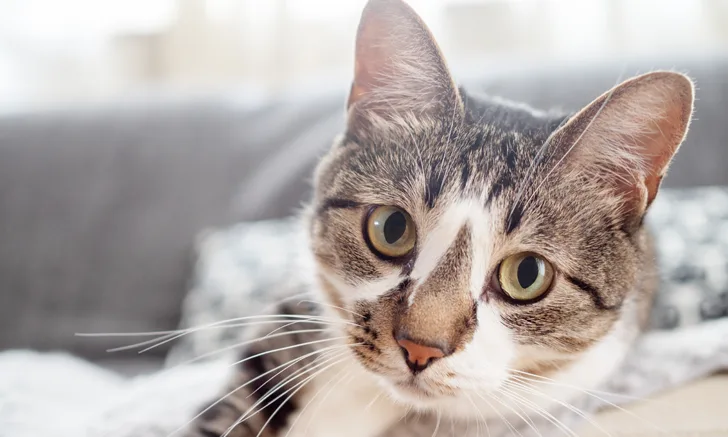
In the Literature
Del Baldo F, Fracassi F, Pires J, et al. Accuracy of a flash glucose monitoring system in cats and determination of the time lag between blood glucose and interstitial glucose concentrations. J Vet Intern Med. 2021;35(3):1279-1287.
The Research …
Continuous interstitial glucose monitoring systems have recently become available in veterinary medicine. These small, portable devices can be easily applied and allow continuous measurement of interstitial fluid glucose,1 providing frequent readings with minimal pet owner and patient stress.2 Clinical applications for interstitial glucose have been reported in several veterinary species,3,4 but direct comparisons to blood glucose in cats are lacking, and reports on tolerability and application are largely anecdotal.
In the first part of this study, 20 pet diabetic cats receiving insulin had their blood glucose measured with a glucometer; results were compared with interstitial glucose readings. All cats had been treated with insulin glargine (median dose, 2 units) for at least one month prior to sensor application. Frequency of administration was not recorded. One cat had concurrent acromegaly; no other cats had comorbidities.
Sensor application was generally straightforward; 19 out of 20 applications were successful. Sensors were well tolerated in 17 cats, whereas 3 cats removed the sensors within 48 hours. The median wearing period was 5.5 days, with no significant difference for sensors secured with additional tissue glue. One cat had a local erythematous reaction thought to be caused by the device adhesive and additional tissue glue.
Strong positive correlation was present between interstitial glucose and blood glucose; however, only 47% of interstitial glucose readings <100 mg/dL, and 43.6% of readings >100 mg/dL, were within 15 mg/dL of blood glucose. Thus, the interstitial glucose monitor did not meet International Organization for Standardization criteria. The interstitial glucose monitoring system often underestimated blood glucose, particularly in cats in the hyperglycemic range.
The second part of the study evaluated correlation between interstitial glucose and blood glucose in 7 healthy, purpose-bred cats undergoing IV glucose tolerance testing. Interstitial glucose increased more slowly than blood glucose measured via glucometer in these cats when a rapid dextrose infusion was administered; no positive correlation was noted. When the infusion was slow, a strong positive correlation was seen, and interstitial glucose consistently underestimated blood glucose.
This study was well designed but had some limitations. Pet diabetic cats were stable and otherwise healthy, but this may not represent the population of diabetic cats with dehydration or other comorbidities that can affect interstitial glucose readings.3 In addition, IV glucose tolerance tests were performed in healthy, purpose-bred cats; this may not replicate clinical situations of rapid glucose change.
Recent data have been published regarding successful use of interstitial monitors in dogs4,5 and cats3 with diabetic ketoacidosis, suggesting that the slower increase of interstitial glucose compared with blood glucose during periods of rapid change may not be clinically relevant.
The authors concluded that, although interstitial glucose monitors did not fulfill International Organization for Standardization requirements, they are sufficiently accurate for glucose monitoring in diabetic cats and are clinically useful. Further study is needed, particularly on how to keep the sensor on the cat for longevity.
… The Takeaways
Key pearls to put into practice:
Interstitial glucose monitors are expected to fail earlier in cats than in dogs or humans.
It is important to be aware of the lag in interstitial glucose management in situations of rapid glucose change.
Interstitial glucose results are less accurate at very high glucose concentrations.
You are reading 2-Minute Takeaways, a research summary resource presented by Clinician’s Brief. Clinician’s Brief does not conduct primary research.